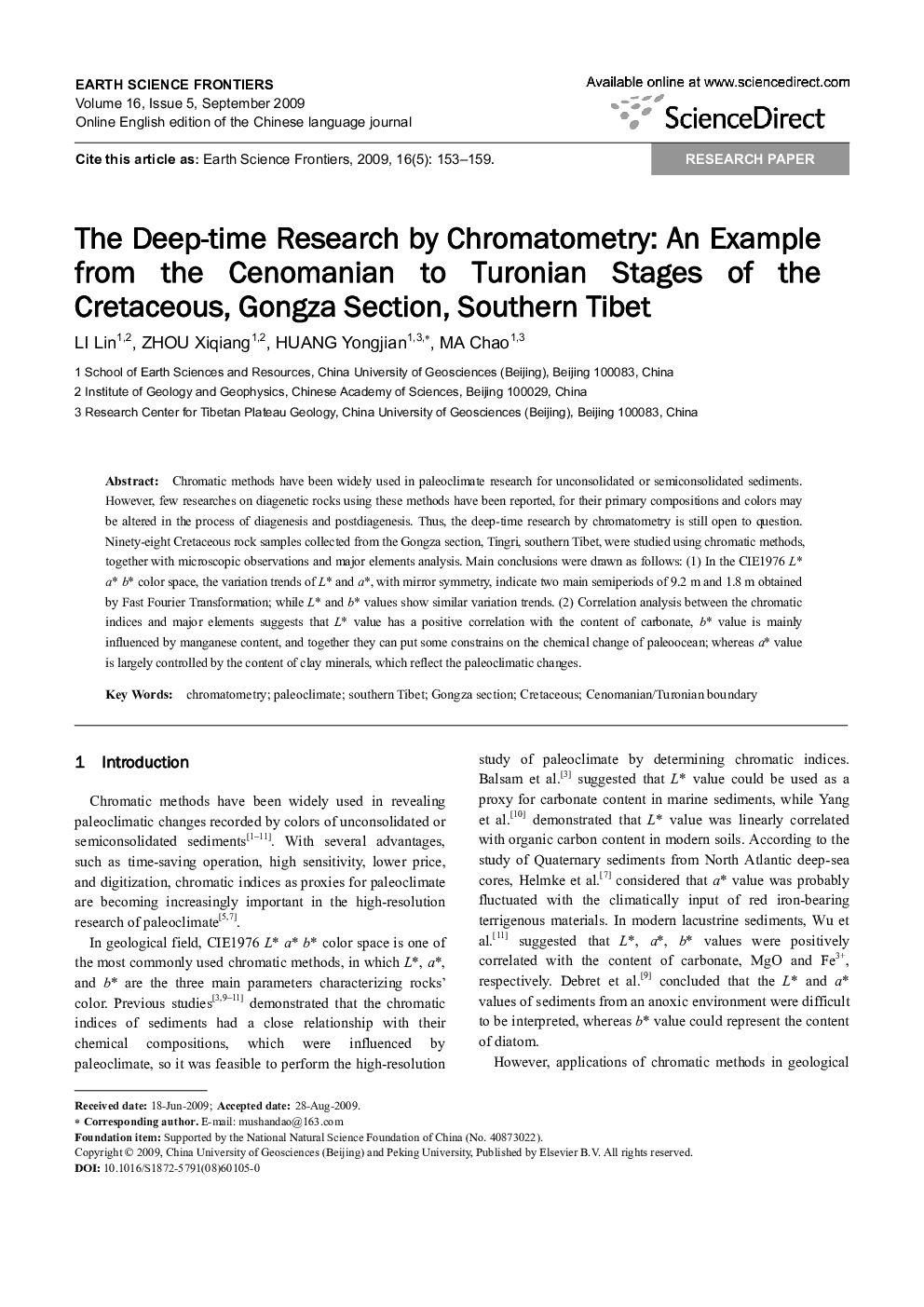| Article ID | Journal | Published Year | Pages | File Type |
|---|---|---|---|---|
| 4701506 | Earth Science Frontiers | 2009 | 7 Pages |
Chromatic methods have been widely used in paleoclimate research for unconsolidated or semiconsolidated sediments. However, few researches on diagenetic rocks using these methods have been reported, for their primary compositions and colors may be altered in the process of diagenesis and postdiagenesis. Thus, the deep-time research by chromatometry is still open to question. Ninety-eight Cretaceous rock samples collected from the Gongza section, Tingri, southern Tibet, were studied using chromatic methods, together with microscopic observations and major elements analysis. Main conclusions were drawn as follows: (1) In the CIE1976 L* a* b* color space, the variation trends of L* and a*, with mirror symmetry, indicate two main semiperiods of 9.2 m and 1.8 m obtained by Fast Fourier Transformation; while L* and b* values show similar variation trends. (2) Correlation analysis between the chromatic indices and major elements suggests that L* value has a positive correlation with the content of carbonate, b* value is mainly influenced by manganese content, and together they can put some constrains on the chemical change of paleoocean; whereas a* value is largely controlled by the content of clay minerals, which reflect the paleoclimatic changes.
